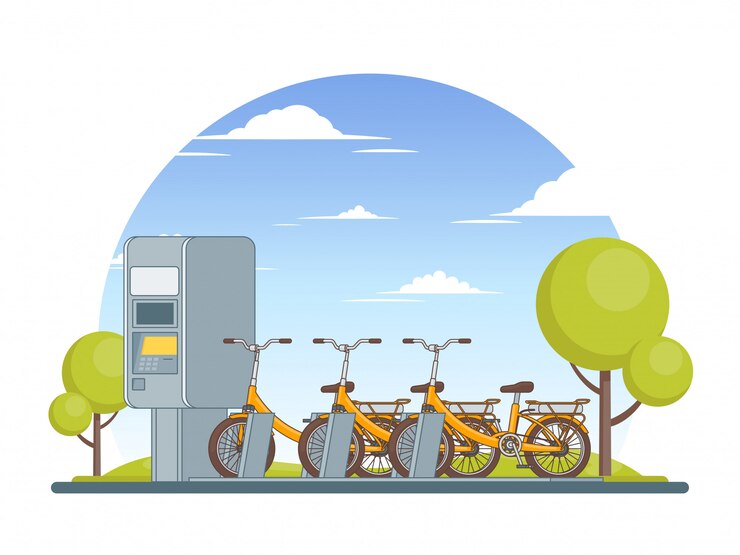What is the GST rate on Bicycle and its parts?
- 20 Sep 24
- 13 mins

What is the GST rate on Bicycle and its parts?
Key Takeaway
- Non-electric bicycles in India are subject to a 12% GST rate, aimed at maintaining affordability while contributing to national revenue.
- Electric bicycles enjoy a reduced GST rate of 5% in India to promote environmentally friendly transportation alternatives.
- Parts and accessories for bicycles and motorcycles generally attract an 18% GST, whereas items specifically for disabled person carriages are taxed at a reduced 5%.
- The lower GST rates on electric bicycles align with global trends to encourage the adoption of sustainable and eco-friendly transportation options.
- The uniform 18% GST rate on two-wheeler insurance increases the overall cost of ownership but provides essential financial protection against damages and theft.
GST on purchase of a bicycle
The 12% GST rate on non-electric bicycles in India reflects a balanced approach by the government. By setting this rate, the aim is to keep bicycles affordable for the average consumer while still generating necessary tax revenue. Bicycles are a primary mode of transportation for many, particularly in rural areas where the distances are vast and public transport may not be as readily available. They also play a significant role in urban areas for short-distance travel, helping reduce traffic congestion and pollution.
Economic Impact
The affordability of bicycles can significantly impact the economic well-being of lower-income families. By maintaining a moderate GST rate of 12%, bicycles remain financially accessible to more people, enabling daily commuting for work, education, and other essential activities without the burden of higher transportation costs. This rate strikes a balance, ensuring that while the government collects revenues through taxes, it does not discourage bicycle usage by making it too expensive for the masses.
Social Implications

From a social perspective, bicycles promote physical health and environmental sustainability. By keeping the GST rate at a moderate level, the government indirectly supports these benefits. It encourages more people to choose cycling over motorized transport, aiding in public health improvement and reduction in vehicular emissions.
Policy Considerations
The GST framework allows for the classification of goods in a manner that can promote certain behaviors or support national objectives. In the case of bicycles, the 12% GST rate reflects a policy decision to support mobility for all economic segments of society while recognizing the role bicycles play in sustainable transportation and environmental goals.
Comparison with Other Goods
Compared to other non-essential luxury goods that are taxed at higher rates (up to 28% in some cases), the 12% rate on bicycles shows a governmental inclination to support more sustainable and necessary lifestyle choices through fiscal policy. This rate is also in line with the rates applied to other essential goods and services, which typically range from 5% to 18%.
In conclusion, the 12% GST rate on bicycles is more than just a financial figure; it's a reflection of a broader economic and social strategy to promote mobility, health, and environmental consciousness across the country.
GST on purchase of an electric bicycle

The GST on the purchase of electric bicycles is set at a reduced rate of 5%. This favorable rate is part of a broader government initiative to promote environmentally friendly transportation options and support the adoption of green technologies. Here's an expanded look at the implications and reasons behind this GST rate:
Encouraging Eco-Friendly Transportation
Electric bicycles offer a sustainable alternative to traditional motor vehicles, reducing reliance on fossil fuels and decreasing greenhouse gas emissions. By setting a lower GST rate of 5%, the government makes these bicycles more affordable and attractive to potential buyers who might otherwise be deterred by the higher upfront costs typically associated with electric vehicles.
Boosting the Electric Vehicle (EV) Sector
The lower GST rate is also aligned with the Indian government's push to boost the electric vehicle industry within the country. This initiative includes various incentives such as subsidies, tax rebates, and infrastructure development like charging stations, all designed to create a supportive ecosystem for electric vehicles, including bicycles.
Economic and Health Benefits
Electric bicycles blend the physical health benefits of cycling with the convenience and range enhancement provided by electric power. They are particularly beneficial in urban settings where commuting distances can be a barrier to bicycle use. By promoting electric bicycles through lower GST rates, the government not only supports environmental goals but also encourages a healthier lifestyle among its citizens.
Accessibility and Inclusivity
Electric bicycles can be a more accessible option for individuals who may find traditional bicycles too physically demanding, including older adults or those with certain disabilities. The reduced GST rate helps lower the cost barrier, making these bikes a feasible option for a broader segment of the population.
Aligning with Global Trends
Globally, many countries are adopting measures to encourage the use of electric vehicles as part of their sustainability strategies. By implementing a lower GST rate, India aligns itself with these international efforts, demonstrating its commitment to global environmental agreements and sustainable development goals.
In conclusion, the 5% GST rate on electric bicycles is a strategic decision aimed at fostering the adoption of greener transportation methods, supporting the burgeoning electric vehicle sector, and contributing to public health and environmental sustainability in India. This tax policy is expected to accelerate the growth of the electric bicycle market, making it an integral part of India's transportation ecosystem.
GST rates and HSN code for Bicycles.
Bicycles are classified under specific categories in the Harmonized System of Nomenclature (HSN) for tax purposes. The HSN code is used internationally to standardize the classification of goods and is adopted in the GST system to categorize items for taxation. Here’s an overview of the GST rates and the corresponding HSN codes for bicycles:
HSN Codes for Bicycles
- Traditional Bicycles (non-electric): These are classified under HSN code 8712. This code encompasses various types of bicycles including racing bikes, mountain bikes, and ordinary bicycles used for daily commuting.
- Electric Bicycles: These are also categorized under the same HSN code 8712. Electric bicycles include those equipped with an auxiliary electric motor to assist the rider.
GST Rates
- GST on Traditional Bicycles: The GST rate for bicycles is 12%. This rate is designed to be moderately low to ensure affordability while still contributing to the government's revenue. This rate applies universally across various types of non-electric bicycles covered under HSN code 8712.
- GST on Electric Bicycles: Electric bicycles attract a lower GST rate of 5%. This reduced rate is part of the government’s initiative to promote eco-friendly transportation solutions. The 5% rate helps make these advanced bicycles more accessible and affordable, encouraging their adoption over more polluting forms of transportation.
💡If you want to pay your GST with Credit Card, then download Pice Business Payment App. Pice is the one stop app for all paying all your business expenses.
Implications of GST Rates and HSN Codes
The use of HSN codes helps streamline the tax administration process and ensures uniformity in the taxation of goods across different sectors. For bicycles, the clear differentiation in GST rates between traditional and electric models reflects the government's policy to support environmental sustainability through fiscal measures. The lower rate for electric bicycles is particularly aimed at boosting the adoption of cleaner technologies in personal transport.
GST on Two-wheeler Insurance in India
GST (Goods and Services Tax) on two-wheeler insurance falls under the financial services category. The GST rate applied to two-wheeler insurance, including those for both traditional motorcycles and electric bikes, is set at 18%. This rate is consistent across the board for all types of vehicle insurance.
Details on GST for Two-Wheeler Insurance:
- Uniform Rate: The 18% GST rate on two-wheeler insurance is uniform for all types of motorcycles and scooters, irrespective of their engine capacity or type (electric or combustion engine). This rate aligns with the general GST rate for most financial services in India.
- Impact on Premiums: The application of an 18% GST affects the total cost of the insurance premium that a consumer pays. It directly increases the overall expense of obtaining insurance, as the tax is added to the base premium rate set by the insurance company.
- Implications for Policyholders: For consumers, the GST rate of 18% means that purchasing insurance for their two-wheelers becomes more expensive. However, considering the financial protection it offers against damages and theft, insurance remains a vital requirement for vehicle owners.
- Revenue Generation: From the government's perspective, the GST on financial services, including vehicle insurance, serves as a significant source of revenue. It also ensures a standardized approach to taxing services that are crucial for economic functions.
Cycle Tax Rates around the World
The Goods and Services Tax (GST) or Value Added Tax (VAT) rates applied to bicycles can vary significantly around the world, reflecting each country's economic policies, environmental priorities, and efforts to promote healthier lifestyles and sustainable transport. Here’s an overview of how different countries tax bicycles:

| Country | Standard Tax Rate on Bicycles | Specific Initiatives or Reduced Rates for Bicycles |
|---|---|---|
| European Union (EU) | Varies (17% to 27%) | Different rates per country; for example, the Netherlands at 9% |
| United Kingdom (UK) | 20% | Cycle to Work scheme allows tax-free purchases, effectively reducing the cost |
| United States (US) | N/A (varies by state, 0% to over 9%) | Some states offer sales tax holidays where bicycles can be purchased tax-free |
| Canada | 5% GST + provincial rates (total can vary, e.g., 13% in Ontario with HST) | N/A |
| Australia | 10% | Uniform GST rate applies to bicycles |
| India | 12% for non-electric, 5% for electric bicycles | Lower rate for electric bicycles to promote eco-friendly transport |
| China | 13% | Unified VAT rate following the 2019 tax overhaul |
Policy Objectives
Globally, the variation in taxation rates for bicycles often correlates with government priorities such as environmental conservation, traffic congestion reduction, public health promotion, and economic strategies. Countries that aim to promote cycling as a sustainable and healthy mode of transport tend to implement lower taxes on bicycles or offer tax incentives and subsidies. This can be seen in nations with strong cycling cultures or those aiming to reduce carbon emissions and improve urban mobility.
Understanding these international perspectives provides insights into how fiscal policies can influence consumer behavior and promote societal benefits through strategic taxation and incentives.
Impact on the Cycling Industry
The GST rates applied to bicycles and electric bicycles significantly influence the cycling industry in various ways:
- Consumer Demand: Lower GST rates on electric bicycles, such as the 5% rate in India, can increase consumer demand as these bikes become more affordable. Conversely, higher rates might deter some potential buyers, particularly in cost-sensitive markets.
- Manufacturing and Sales: Manufacturers and retailers of bicycles may adjust their production strategies and pricing models based on GST implications. A favorable tax regime can encourage the expansion of production facilities and diversification of product offerings.
- Innovation and Technology: Lower tax rates on electric bicycles can drive investment into research and development. Companies might be incentivized to innovate more in terms of battery life, motor efficiency, and overall bike performance to capitalize on increased consumer interest.
- Environmental Impact: Tax policies can align with governmental environmental goals. By encouraging the purchase of electric bicycles through lower GST rates, governments promote sustainable transportation, which can contribute to reduced urban congestion and lower carbon emissions.
- International Competitiveness: In countries where cycling is heavily promoted through tax incentives or lower VAT/GST rates, domestic companies might gain a competitive edge in the global market. This can lead to higher exports and an expanded global footprint for brands originating from these countries.
GST on Parts and Accessories of Bicycles and Motorcycles and for Carriages for Physical Disability
In many regions, parts and accessories for motorcycles and bicycles also carry a GST or VAT charge, typically aligned with the standard rates for non-essential goods, but there are important distinctions to note:
- Standard Parts and Accessories: In India, for example, parts and accessories for motorcycles and bicycles generally attract an 18% GST rate. This includes items such as helmets, gears, brakes, and wheels.
- Carriages for Disabled Persons: Many countries offer reduced GST/VAT rates or exemptions for products designed for disabled individuals to support accessibility and mobility. In India, parts and accessories specifically designed for carriages used by disabled persons are taxed at a reduced rate of 5%. This lower rate facilitates easier access to necessary modifications and supports inclusivity.
These tax structures have various implications:
- Cost of Maintenance and Upgrades: Higher tax rates on parts can increase the overall cost of maintaining and upgrading bicycles and motorcycles, potentially affecting consumer decisions regarding these vehicles.
- Support for Disability Access: Reduced tax rates for parts used in disabled carriages make these essential items more affordable, promoting greater mobility and quality of life for disabled individuals.
- Economic Burden: While higher taxes might generate significant revenue, they can also impose an economic burden on consumers, possibly slowing down the growth of the biking and motorcycling community.
 By
By 


















